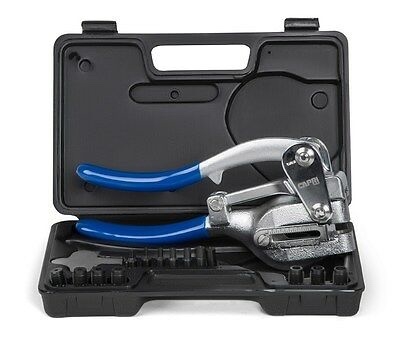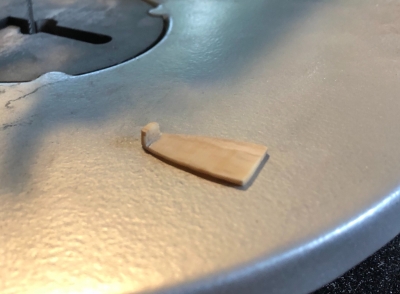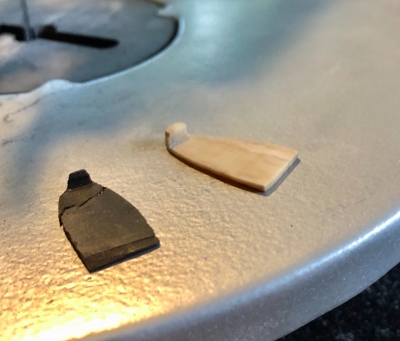Welcome to our forum. A Message To Our New and Prospective Members . Check out our Forum Rules. Lets keep this forum an enjoyable place to visit.
 Topic RSS
Topic RSS



 (0 votes)
(0 votes) Regulars
 Offline
Offline

Discouraged after going to pet store. Much larger percentage of porous material than I expected, even at base. But I did get one for experiment. I now wonder if hoove could be used. Dodd, the English bow maker, spent most of his time at London liveries. I had assumed he salvaged horse hair from dead animals. Perhaps he also took the hooves?
Success is the progressive realisation of a worthy ideal. —Earl Nightingale.
Regulars
 Offline
Offline
Regulars
 Offline
Offline

Regulars
 Offline
Offline

Deer hooves have a black surface finish. I assume that color is consistent throughout the material. And since it is not a domestic animal, a deer hoove should be relatively clean to handle. I think that a black bow tip would be attractive, with or without the use of matching black hair.
Success is the progressive realisation of a worthy ideal. —Earl Nightingale.
Regulars
 Offline
Offline
Regulars
 Offline
Offline

Regulars
 Offline
Offline
Regulars
 Offline
Offline

Stainless steel bow tip revisited.
I keep forgetting that we live in the future. I had a day to think about an easy method of making a stainless steel bow tip. Here goes.
Many foreign beers are available in a mini sized stainless steel keg. The interior wall of the keg is protected with a polymer liner. The exterior advertising is easily removed with a solvent. The hair knot hole could be approximated with a hand held metal punch (Harbor Freight or similar) and filed to meet the wood with a diamond coated needle file (again, Harbor Freight or similar).
No issue if polymer is missing on interior. In that case glue to exterior advertising film.
Success is the progressive realisation of a worthy ideal. —Earl Nightingale.
Regulars
 Offline
Offline
Regulars
 Offline
Offline

Regulars
 Offline
Offline
Regulars
 Offline
Offline
Regulars
 Offline
Offline
Regulars
 Offline
Offline

Hi @steveduf and others. Suggested alternate method for ebony and ivory bending. Assuming you have already made tip clamp recommended above.
Ebony. Place prepared ebony tip and place on a stainless steel culinary mesh strainer. Suspended mesh strainer over an open pot of boiling water for about five minutes. Remove tip from strainer and immediately clamp to bow head. Remain in clamped position for an hour or so before glue up.
Ivory. Immerse prepared ivory tip and place on culinary mesh strainer. Immerse half of strainer (containing ivory tip) in a pot of boiling water for about 15 minutes. Point of strainer is to suspend ivory from pot bottom to keep from scorching. If you lack strainer, keep stirring water to keep tip suspended. Remove tip fromstrainer and immediately clamp on bow head. Remain in clamped position for an hour or so before glue up.
The above should work. I will consult my Kun manual for making bows and will report back if he used a different method.
Success is the progressive realisation of a worthy ideal. —Earl Nightingale.
Regulars
 Offline
Offline
In my reading...
basically the same thing...
the site I read said to place it in boiling water but removed from heat. Hence no scorching. It also referred to molding it first before gluing. Advantage to that would be if the piece cracks there is no glue involved yet.
A lot of these sites use super glue which is why you wouldn’t want it wet.
i think I want to use hide glue, especially for whatever is glued to the stick, @Irv @Fiddlerman what is your opinion on the glue?
Regulars
 Offline
Offline

Hi @steveduf . The mention of the bending form threw me. No way you want to use something like a rib bender.
Hide glue or original Titebond should work fine for both the ebony and ivory. I would use something like styrene model cement on the synthetic tip armor.
I would try to avoid the use of any type of glue for the hair wedges, and particularly stay away from super glue on the wedge. I get loads of cf bows for the cost of postage because the oriental technicians insist on making them “throw aways” by this practice.
Success is the progressive realisation of a worthy ideal. —Earl Nightingale.
Regulars
 Offline
Offline
@Irv
definitely don’t use any glue on the rehair, molding the tip uses the same shoe mold used in gluing tip to bow but also uses a foot in the shoe for lack of better words to make a two piece mold for the liner and tip. Evidently with mammoth ivory there is not much “spring-back” after releasing from mold... we shall see.
Regulars
 Offline
Offline


Regulars
 Offline
Offline

 @steveduf and others. I went to a luthier last week who mentioned another glue option of which I have no experience. He uses fish glue and said that it had more tack than hide glue.
@steveduf and others. I went to a luthier last week who mentioned another glue option of which I have no experience. He uses fish glue and said that it had more tack than hide glue.
You might want to provide a hole on the ebony and ivory before you glue them to the head. Harbor Freight and others sell a hand held plier type hole punch that comes with various sized punch sets. I think that they go for about $20. I think that you would get a cleaner hole from something like that than a drill.
Success is the progressive realisation of a worthy ideal. —Earl Nightingale.
2 Guest(s)


 Log In
Log In Register
Register Home
Home




























